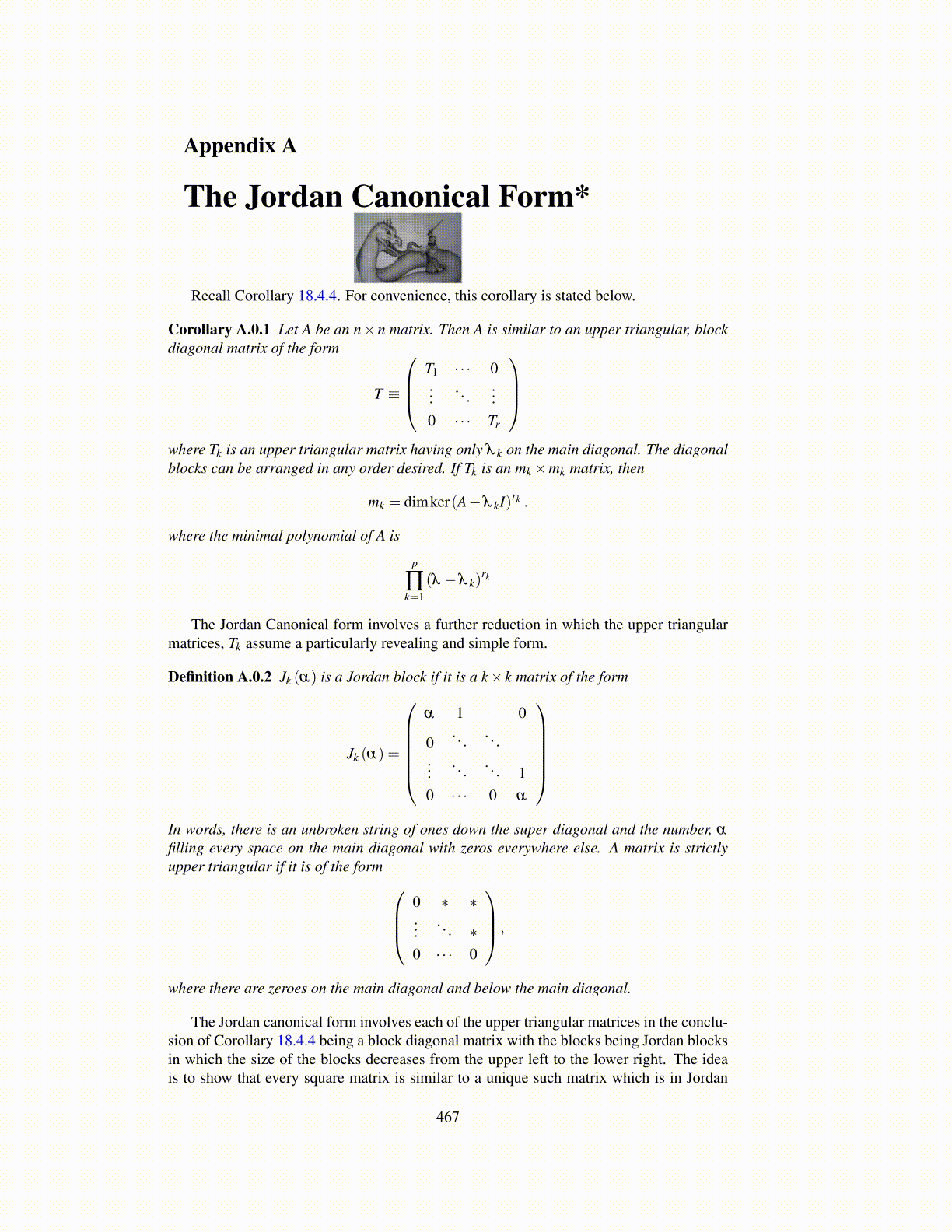
Appendix A
The Jordan Canonical Form*
Recall Corollary 18.4.4. For convenience, this corollary is stated below.
Corollary A.0.1 Let A be an n×n matrix. Then A is similar to an upper triangular, blockdiagonal matrix of the form
T ≡
T1 · · · 0...
. . ....
0 · · · Tr
where Tk is an upper triangular matrix having only λ k on the main diagonal. The diagonalblocks can be arranged in any order desired. If Tk is an mk×mk matrix, then
mk = dimker(A−λ kI)rk .
where the minimal polynomial of A is
p
∏k=1
(λ −λ k)rk
The Jordan Canonical form involves a further reduction in which the upper triangularmatrices, Tk assume a particularly revealing and simple form.
Definition A.0.2 Jk (α) is a Jordan block if it is a k× k matrix of the form
Jk (α) =
α 1 0
0. . .
. . ....
. . .. . . 1
0 · · · 0 α
In words, there is an unbroken string of ones down the super diagonal and the number, α
filling every space on the main diagonal with zeros everywhere else. A matrix is strictlyupper triangular if it is of the form
0 ∗ ∗...
. . . ∗0 · · · 0
,
where there are zeroes on the main diagonal and below the main diagonal.
The Jordan canonical form involves each of the upper triangular matrices in the conclu-sion of Corollary 18.4.4 being a block diagonal matrix with the blocks being Jordan blocksin which the size of the blocks decreases from the upper left to the lower right. The ideais to show that every square matrix is similar to a unique such matrix which is in Jordan
467